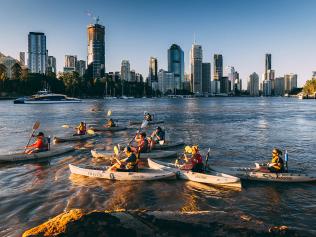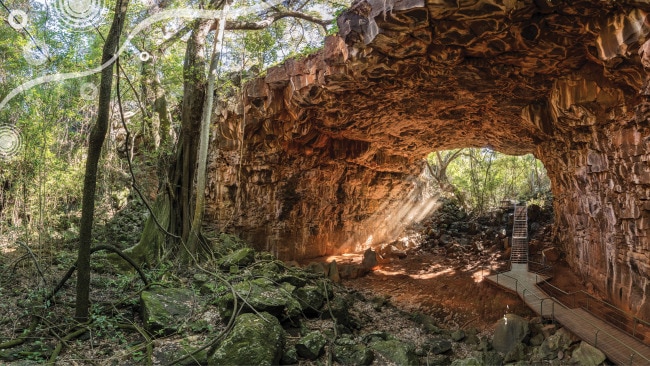How a city rediscovered its river
From dredging and flooding, to the heart of the capital, here’s how Brisbane is embracing its waterway.

From dredging and flooding, to the heart of the capital, here’s how Brisbane is embracing its waterway.
If you thought Brisbane Metro was one of those infrastructure fantasies that gets talked about for years but never seems to happen (hello, high-speed rail), think again. The Brisbane City Council turn-up-and-go Metro is coming and there are five key things you need to know.
It will affect your life, no matter where you live‘I wish my commute to and from work was longer,’ are words no commuter has ever spoken. We all want more time to spend doing the things we love. Enter Brisbane Metro – the public transport system that’s about to make travelling across the city quicker, easier and cleaner than ever before.The high-frequency, high-capacity Metro will see 60 fully electric vehicles on wheels running along dedicated busways every three minutes during peak periods. It’s expected to reduce travel times by an estimated 30 per cent in the morning and 50 per cent in the evening, during peak periods.Stage 1 services, due to start late 2023, will see a 21km network connecting 18 stations between Eight Mile Plains and Roma Street, and Royal Brisbane and Women’s Hospital and the University of Queensland. Future stages being considered include services to Chermside, Carindale and Brisbane Airport.Each vehicle will consist of three carriages able to carry 150 people comfortably, helping to cut travel times and ease road congestion across Brisbane. During special events such as Riverfire and New Year’s Eve, they will be able to carry their maximum capacity of 180 people. Brisbane Metro will also free up more buses for the suburbs.Lord Mayor Adrian Schrinner says the project will revolutionise the city’s public transport system. “By 2031, the region’s population will be 4.5 million and our inner-city population is set to double,” he says.“What Brisbane Metro delivers for commuters is an environmentally-friendly turn-up-and-go service where you can travel without the need for timetables.”Infrastructure Association of Queensland chief executive officer Priscilla Radice echoes the game changer sentiment. “Even if you’re not on that particular route, it will impact how the whole transport system runs and how efficient the system is,” she says. It’s coming sooner than you thinkAfter hundreds of meetings between the local and state governments in recent years, and concerns the project had reached a stalemate, there was a breakthrough in November. In a show of bipartisanship, a joint announcement was made that early works would commence in early 2020 around the Cultural Centre, where a new underground station will be built.Now, the project is all systems go, with a pilot vehicle due to arrive in Brisbane next year for testing before the remaining 59 are ordered. “You need people to be able to get around the city and have the type of experiences and reliability they expect from other world class cities,” Radice says.Weekends will never be the same againWith a 24-hour service on weekends, Brisbane Metro is set to change the way we spend our leisure time. As well as making it easier and quicker to get where you need to go, the round-the-clock service puts Brisbane in the same company as other 24-hour cities such as London, Paris and New York on weekends.“This is very much about the creative and entertainment economy and people being able to get out and about,” Radice says. “People will start to see public transport is more convenient than driving and parking your car.”Having lived and worked in major cities around the world, Brisbane Airport Corporation chief executive officer Gert-Jan de Graaff is no stranger to 24-hour services.“The liveability of a city is influenced enormously by how easy it is to get around. The Metro transport system will be very welcome for the city,” he says.
The Metro is a clean and green optionAs the world shifts to a low carbon economy and cleaner energy sources, passengers on the Metro can take comfort in the knowledge their ride isn’t causing unnecessary environmental harm.The battery powered electric vehicles can be recharged in less than six minutes at the end of each route and produce zero tailpipe emissions. Capable of accelerating at speeds equal to a bus and maintaining a top speed of 90km/hour, there is no trade off – just intelligent, future-fashioned technology at work.They’ll also look and sound good, travelling in near-silence without any unsightly poles and wires. Brisbane-based supplier Volgren and international electric vehicle specialists HESS were awarded the contract for the fleet which will create up to 40 jobs in Brisbane when they are fitted out and finished at Volgren’s Eagle Farm base. This will include structural and component painting, installation of low voltage equipment and information systems, the interior fit-out and quality assurance. The chassis and drivetrains will be built by HESS in their specialist manufacturing facilities in Switzerland.“The investment in electric vehicles is absolutely worth it. There is, in a way, no other option than going electric,” de Graff says.Cr Schrinner says the electric fleet will save an estimated 50,000 tonnes of greenhouse gas emissions over 20 years and reduce running costs.“I think the people of Brisbane will be very excited about these vehicles, and proud their city is taking a positive step to cut vehicle pollution,” he says.
It’s a clever solution to a curly problemThe fully-funded $944 million Brisbane Metro has been applauded by the infrastructure sector for delivering a high frequency, high capacity service at excellent value for money.“It’s the first mass transit, high frequency, turn-up-and-go service for Brisbane and combined with Cross River Rail it will be transformational,” Radice says. Rather than diving directly into a technical solution, she says Brisbane City Council was focused on the outcome of what they were trying to achieve.“Big projects people of the world love focusing on whether the Metro is a heavy rail, light rail, should it have been on tracks, is it just a bus?” she says. “Essentially Brisbane Metro is a world class vehicle that will be running every few minutes, it is mass transit and it is a value for money project because we haven’t had to deliver a whole pile of track work and other infrastructure.“You can utilise the existing corridors and upgrade them to allow for these mass transit vehicles. It’s the right project in the right situation on the right route.”
Originally published as How a city rediscovered its river


